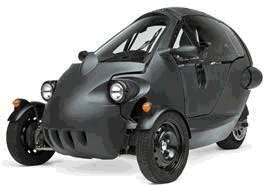Barbara Fitzpatrick wrote:My stats (which I admit came from a biology prof and not physics profs) were an average of at that time (1980s) capability of all types of plants.
DAR
Okay, I have done some checking and it seems there are
at least four ways of addressing the issue of "powerplant efficiency."
There is the actual, raw, convertion of fuel (coal/oil/nat. gas) to electricity. This is what I am interested in and I am quite sure this is what the physicists were speaking of (but they may have been adding in some of the overhead of a powerplant).
Then there are these three (from the
Nuclear Energy Institute (consider the source). Actually, the lines are not quite as neat as I have drawn them here when I say four ways....
***
Comparative Measures of Power Plant Efficiency
Economic Efficiency is the most important measure of efficiency because it measures how a plant uses scarce resources and what the value of those resources is. Economic Efficiency is measured using production cost. Production cost is the cost of operating the plant—including fuel, labor, materials, and services—to produce one kilowatt-hour (kWh) of electricity. Nuclear power has the lowest production cost of the major sources of electricity, with production cost of 1.68 cents/kWh. Coal has a cost of 1.9 cents/kWh, natural gas 5.87 cents/kWh, and petroleum 5.39 cents/kWh. Hydro has a production cost of 0.5 cents/kWh, wind .2 cents/kWh and solar 2.48 cents/kWh.
Operational Efficiency measures how efficiently a plant’s capacity to produce electricity is utilized. Operational Efficiency is measured using a measure called capacity factor. Capacity factor is the ratio of the total electricity that a plant produced during a year compared to the total potential electricity that would have been produced if the plant operated at 100 percent power during every hour of the year. It is essentially the percentage of electricity that a plant produced compared to the electricity that it could have produced operating constantly at peak output. Nuclear plants typically have the highest capacity factor of any generating source with capacity factors of about 90 percent. Fossil fueled plants have lower capacity factors; coal typically has around a 70 percent capacity factor, natural gas plants of different types can vary from 14 percent to 50 percent capacity factors. Many renewables have low capacity factors. Wind and solar generation typically average around 15 to 30 percent capacity factors.
Energy Efficiency measures the amount of energy in the raw fuel needed to produce a specified amount of electricity. These fuels include natural gas, coal, oil, and uranium for nuclear energy. Energy Efficiency is measured using a measure called the heat rate. The heat rate is the amount of energy (Btu) in the fuel needed to produce one kilowatt-hour (kWh) of electricity. The lower the heat rate the more energy efficient a plant is. Plants that use a steam cycle such as coal, nuclear energy, and some natural gas plants tend to have heat rates of around 10,000 Btu/kWh. Some natural gas plants using the combined cycle technology have heat rates of around 7,500 Btu/kWh. Heat rate is not applicable for wind and solar plants, since they do not use fuel in the traditional sense of the word.
BARB
Reality unfortunately, thank you all the pols who have grandfathered inefficiency, is a lot lower for coal plants. Gas and petroleum plants (at least at the time) averaged 90% effiency,...
DAR
I am 99% certain that gas and petroleum plants have never come even close 90% efficiency with regard to the type of "efficiency" I am interested in. Converting the total "potential energy" of a fuel, to electricty. No way. As I quoted above from the DOE:
"Today’s plants convert only a third of coal’s energy potential to electricity."
They then speak of hopefully in a decade or two of maybe being able to double that. Maybe.
BARB
Of course, my biology prof and your physicists may have been using different meanings for the word "efficiency" (for instance if my prof meant conversion of fuel to electricity (gross efficiency), and your physicists meant conversion of fuel to electricity minus the energy required to run the plant (net efficiency) that would make a big difference).
DAR
Yes, I think that explains the difference.
Plus, now that I think about it. A powerplant is doing perhaps two conversions whereas a car is only doing one. All little variables asside, a car burns fuel and turns a crank (kinetic energy?). One conversion. A powerplant burns a fuel and turns a crank and then converts it again via a generator, to electricity. I am not sure if there is some loss due to inefficiencies in generators too. I do know that when ever you convert, you lose (usually via heat).
Fascinating.
D.

 [/img]
[/img]


